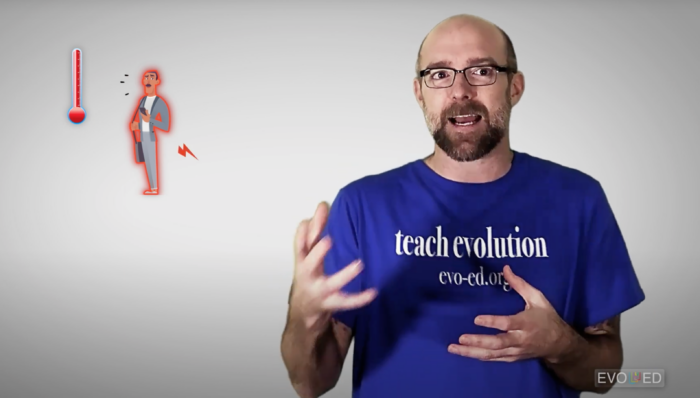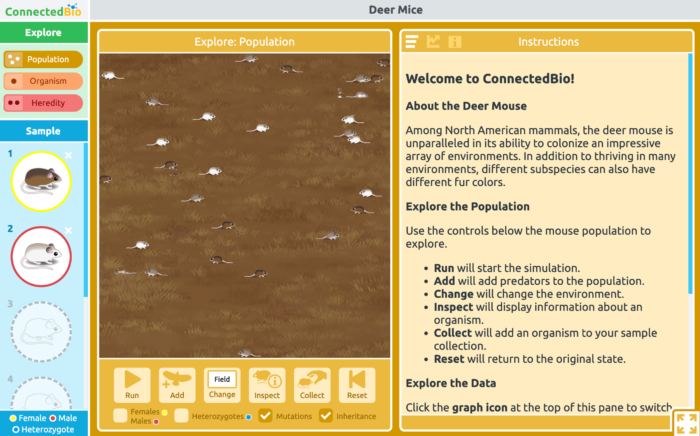While there are a myriad of projects that White Lab personnel have been involved with over the years, there are a handful of large projects that have been central to our work. Each project has had its own unique mix of personnel (typically, Pete White along with one or more postdocs, graduate students, undergraduate, and other collaborators). Each project or project area, is described below.
Jump to:
MothEd
EvoMedEd
EvoEd
ConnectedBio
Teaching and Learning Projects
MothEd
The MothEd Project provides K-12 students, teachers, and researchers an opportunity to co-design investigations that explore moth ecology in their local communities. There are 11,000 moth species across North America, and they play key roles in food webs, as pests, and as nocturnal pollinators. Moths are ecologically important, easy to capture, and there is a relative dearth of research on moths compared to many other insect species. With MothEd, students build low-cost blacklight traps, develop research questions and hypotheses, collect data from local habitats, and use technology-enhanced curricular materials to foster collaboration and conduct analyses.
Stroupe, D., Caballero, M. D., & White, P. (2018). Fostering students’ epistemic agency through the co‐configuration of moth research. Science Education, 102(6), 1176-1200.
Website: https://www.motheducation.org/
EvoMedEd
The EvoMedEd project focuses on exploring human evolution through the lens of human health and disease. Our biology and physiology is inextricably linked to our evolution history. Whether it’s the occurrence of cancer, or addiction disorders, or our battles with viruses – we are a complex mosaic of biological processes that have undergone tens- and hundreds of thousands of years of selection. Like the EvoEd project, EvoMedEd provides videos, powerpoints, and worksheet resources for the teaching and learning of evolution.
Filice, D. C., Riedy, J. J., Heidemann, M. K., Smith, J. J., & White, P. J. (2023). Evaluating introductory biology student perceptions surrounding the use of integrative cases related to human health for evolution education. Evolution: Education and Outreach, 16(1), 6.

EvoEd
The various sub-disciplines of biology are often taught in isolation of one another. This makes it difficult for students to get a good grasp on precisely what… evolution… is. When DNA mutations and the production of novel proteins are learned in one particular organismal context, while selection is learned in a completely different context, and phylogenetic patterns of relatedness in still another, it becomes challenging (at best) for students to keep track of which bits of “biology content” are an integrated component of “evolution” and which parts are not.
The EvoEd project has thus developed and tested integrated curricular materials, designed to help students understand the crosscutting nature of the process of evolution, within the biological sciences.
White, P. J., Heidemann, M., Loh, M., & Smith, J. J. (2013). Integrative cases for teaching evolution. Evolution: Education and Outreach, 6, 1-7.
Website: EvoEd Website




ConnectedBio
The Connected Biology project, a collaborative effort between Michigan State University and the Concord Consortium, is developing a connected set of technology-enhanced three-dimensional lessons for high school biology. This novel curriculum is aligned with research-based NGSS Performance Expectations and fosters integrated learning of high school genetics and evolution. The content for all curriculum development is based on the EvoEd project enhanced by the technological frameworks of the Concord Consortium.
Warwick, A. R., Kolonich, A., Bass, K. M., Mead, L. S., & Reichsman, F. (2020). Ten simple rules for partnering with K–12 teachers to support broader impact goals. PLOS Computational Biology, 16(10), e1008225
Website: ConnectedBio Overview

Teaching and Learning Projects
Along with the aforementioned major projects, there tends to be a projects running on a regular basis to test innovative methods of teaching and learning in higher ed introductory biology courses.
Past examples include:
Molecular Sculpting – using Play-Doh in Intro Cell and Molecular biology to help students better engage-with, visualize, and learn microscopic cellular processes.
White, P. J. (2016). Molecular sculpting: Active learning of subcellular systems & processes. The American Biology Teacher, 78(6), 482-491.
Figure of the Day – the use of daily image-based brain-teasers to help students develop and improve their data visualization and representation skills.
Kirby, C. K., Fleming-Davies, A., & White, P. J. (2019). The figure of the day: A classroom activity to improve Students’ figure creation skills in biology. The American Biology Teacher, 81(5), 317-325.
Hardy-Weinberg Card Simulations – an in-class game to help students compute and describe Hardy-Weinberg genetics in a marine ecosystem under intense selective pressure.
Bonner, K., Piechnik, D., Kovacs, J., Warwick, A., & White, P. (2019). Clam Spawning & Red Tide: Helping Students Learn the Hardy-Weinberg Equilibrium. The American Biology Teacher, 81(5), 366-371.
Fish Fraud – an semester-long lab stream where students explore the identity of fish in local restaurants using gene-barcoding techniques.
Rumfelt, K. E., Wonderlin, N. E., Hulbert, D., & White, P. J. (2020). From DNA Extraction to Sequence Analysis: A Semester-Long Undergraduate Research Project on Fish Mislabeling. The American Biology Teacher, 82(3), 170-175.

